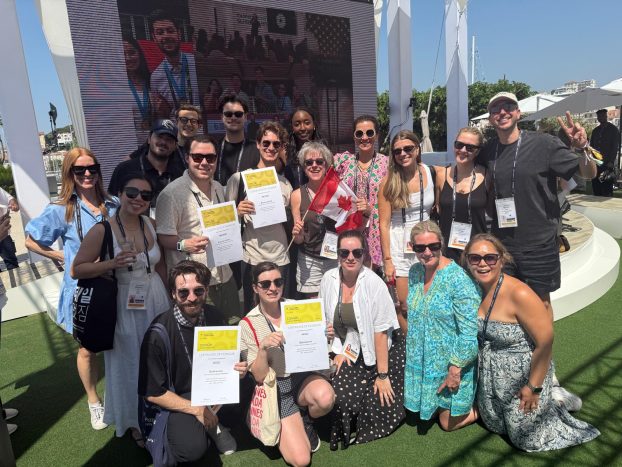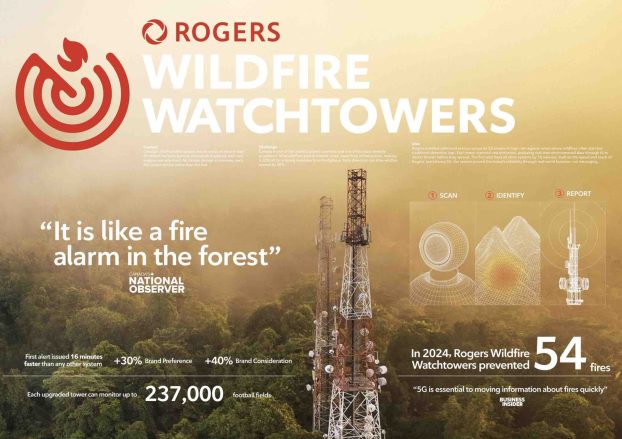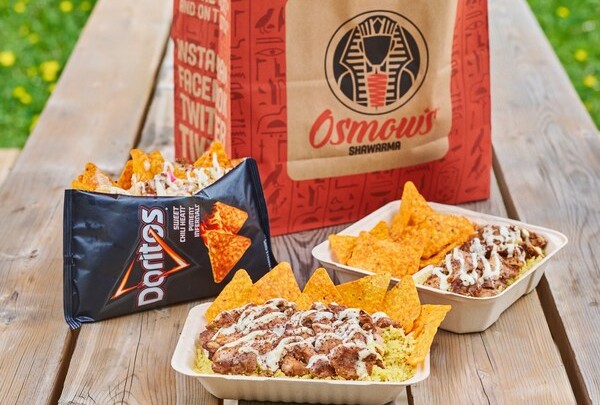The important thing about gum is … well, no point in kidding ourselves here. There really isn’t an important thing about gum.
Except. Let’s say, just hypothetically, that you’re at a party or a club, and you’re angling to lock lips with that hottie you’ve been flirting with all evening. All the lights are green, so it’s clearly just a matter of waiting for the right moment and making your move. But wait: Could there be…breath issues?
Yup, that’s it. That’s the one occasion in your life when having a pack of chewing gum on your person might actually be important to you. And Dentyne Ice would very much like to be the gum that you pull out of your purse or pocket in that situation – so much, in fact, that the brand has built an ongoing campaign based on this simple, universal theme: the nervous anticipation of one’s first kiss with a new love interest.
"That’s really Dentyne’s moment," says Margo Northcote, senior vice-president, co-creative director with Bates Canada, the Toronto-based agency of record for Warner-Lambert Canada’s Adams Division, the makers of Dentyne Ice. "It’s that moment when you’d do anything you could – any extra little thing – to gain confidence. It’s a story we can tell endlessly, in different ways, and people will always relate to it. Because it’s timeless – people have always jumped through hoops and done silly things to get close to someone they have the hots for."
The Dentyne brand has long been associated in the minds of young consumers with dating and kissing, Northcote says. But for Dentyne Ice – a brand extension developed here in Canada and launched in 1996 – Warner Lambert wanted to dial up that "dating gum" positioning several notches.
Accordingly, the brand team has spent a good deal of time conducting and analyzing research, in an effort to understand what goes on in the hearts and minds of young men and women in the 15-24 age range when they’re at that crucial moment before the first kiss. And the result has been a whole succession of ads – primarily in television – that play variations on this theme. (In addition to TV, the brand has done cinema, print and out-of-home, along with a number of promotional efforts.)
To support the product launch, for example, Bates developed a spot featuring a young man closing in for a kiss with an attractive someone. At that moment, he imagines himself surrounded by every guy she’s ever kissed before – all of them issuing taunts and generally undermining his resolve. Happily, there’s a quick confidence-booster available, in the form of Dentyne Ice.
A subsequent series of spots featured vignettes from a typical house party – such as one in which the hero is so floored by the beauty of a young woman that he chews an entire pack of gum, only to discover that it’s just about impossible to speak with an entire pack of gum in your mouth. (There’s a happy ending, though: Turns out she’s done the same.)
The latest effort, created to promote a new flavour called Shiver, hit the airwaves earlier this spring. In this spot (affectionately titled "Pee pee dance"), four guys wait outside the door of a dance club washroom, all in fairly intense states of urinary distress. Suddenly, the door opens, and four stunning young women appear, making a beeline back to the dance floor. Ignoring their shrieking bladders, the guys reach as one for their packs of Dentyne Ice and – breath suitably freshened – march off in pursuit.
"We try to put characters in situations that people can identify with," says Jana Meerkamper, senior brand manager for Dentyne and Dentyne Ice with Scarborough, Ont.-based Warner-Lambert. "It’s taking gum and putting it in a proper context for the 15-24 age group."
Meerkamper says the brand team employs research extensively during the early stages of creative development, often probing the target for their reaction to advertising that’s already been out in the marketplace – but rarely is it used to test a finished creative concept. "We feel confident that the agency knows the brand well," she says.
That confidence is something Northcote says she and her colleagues appreciate. "Warner-Lambert has really used research exceedingly well on Dentyne Ice," she says. "It’s not a bar that creative has to jump over. We never have the feeling that our little darlings are going to get killed in research. They really do let us use research to help the creative process."
Among the things that the agency has learned from research is that the Dentyne Ice advertising should never be too sexually charged. "Once you get beyond that first kiss, it no longer feels like Dentyne territory," she explains. "When you’re getting ready to hop into the sack, you’re way past the point where you’re thinking about fresh breath."
Another little nugget of insight: Make fun of the guys, not the girls. Both male and female viewers, Northcote says, find something adorably goofy about a guy mooning after an unattainable woman. But when the gender roles are reversed, the woman can sometimes come across as desperate – not exactly the tone that the brand is aiming for.
Above all, Meerkamper says, it’s important not to treat the product too seriously – it is, after all, just gum. The Dentyne Ice ads rarely feature the standard beauty shot of the pack; instead, it appears as one might see it in real life: tossed on the dashboard of a car, crumpled on top of a stereo speaker or – as in the most recent spot – lying on the floor and being trampled underfoot.
"I think consumers respect the fact that we’re not trying to pretend to be anything more than we are," she says.
While the brand team makes every effort to stay on top of what’s hot with the target audience, and uses the appropriate trappings in the ads, Northcote says they don’t lose sleep worrying about whether they’ve got all the current trends covered. The strength of the campaign, she points outs, is that it’s based on a universally shared emotion – not this week’s big fad.
"In this business, we talk about insights like they’re a dime a dozen," she says. "But I think true insight into a particular target group is a rare thing. And we’re lucky enough to have one: the insight about how people feel before a first kiss. [Because] we’ve all been there. It is universal and timeless. What you were wearing or driving when you had the feeling – all that has changed. But the feeling itself was the same in Shakespeare’s day. It’ll be the same as long as there are two sexes. It’s not a fad – it’s part of what makes us human."
Also in this report:
– Those cool Chupa Chicks: Chupa Chups’ grassroots efforts to lick Canada has edgy scooter girls taking to the streets and talking up the club crowd p.B2
– Labatt employs dry humour: Moderation campaign relies on insights from student target p.B4
– Advertising to kids in Quebec no picnic: Know the rules or suffer the consequences p.B10
– Grads more valuable than you know p.B15




























